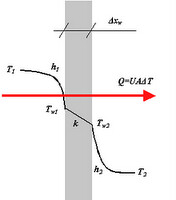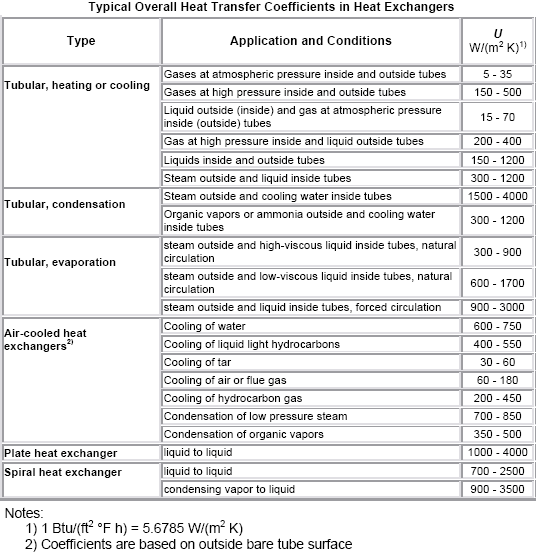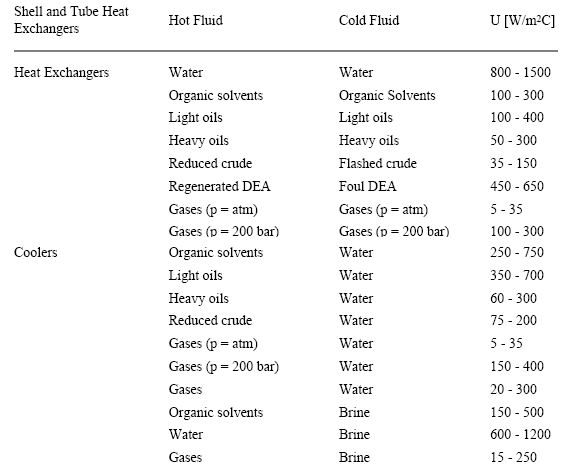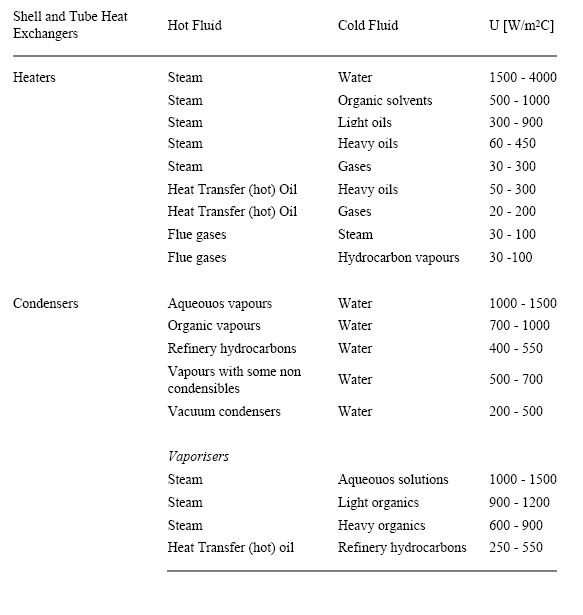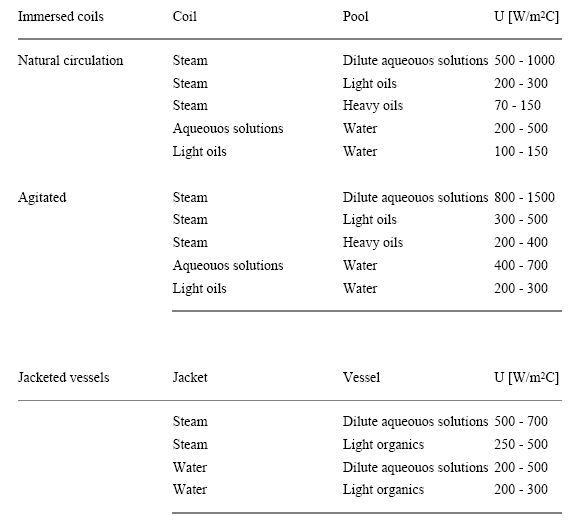Friday, August 17, 2007
Q = U.A.LMTD.F
where
Q = Rate of heat transfer
U = Mean overall heat transfer coefficient
A = Heat transfer surface area
LMTD = Log mean temperature difference
F = Correction factor
LMTD = (DT1-DT2) / Ln (DT1-DT2)
Where
DT1 = Th,i - Tc,o
DT2 = Th,o-Tc,i
For a given heat transfer service with known mass flow rates and inlet and outlet temperatures the determination of Q is straightforward and ΔT can be easily calculated if a flow arrangement is selected (e.g. logarithmic mean temperature difference for pure countercurrent or cocurrent flow). This is different for the overall heat transfer coefficient U. The determination of U is often tedious and needs data not yet available in preliminary stages of the design. Therefore, typical values of U are useful for quickly estimating the required surface area. The literature has many tabulations of such typical coefficients for commercial heat transfer services. Below are tabulation of U value for different applications and heat exchanger types.
Related reading
Labels: Heat Transfer
